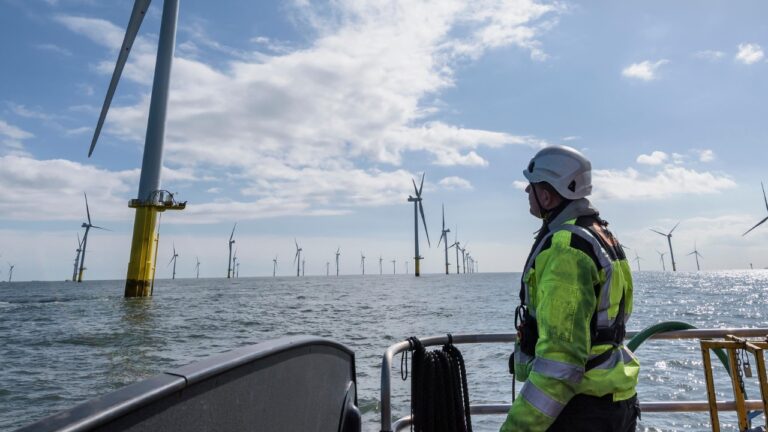
Benedict McAleenan
Senior Fellow, Energy and Environment (2019-2023)
In 2019, as the political parties competed on ever-higher tree targets, Policy Exchange published a paper on this topic – Bigger, Better Forests. At the scales needed to move the dial on carbon emissions, tree planting is not just a matter of heading out and planting some acorns.
Firstly, there is a cultural problem. There is a quiet war going on about which types of trees should be planted, and where. British forestry bears the scars of a tax-incentives scandal that damaged huge swathes of unique peat in northern Scotland (an area known the Flow Country) from the 1950s to the 1980s. Not just that, but before the arrival of the UK Forestry Standard (UKFS) in the 1990s, many tree-planting efforts were poorly designed and monocultural, giving the sector a bad name. Foresters nowadays will point out that the UKFS has made a huge difference, improving woodland design and species diversity, and that the results are only now beginning to show. But this all illustrates the cultural challenges on a hotly disputed topic.
As we recommended, a big part of the solution is to ensure that a woodland’s owner is paid for each of the environmental services it provides – the ‘public goods’ that are enshrined in Michael Gove’s reforms of farm subsidies. If a woodland is purely a commercial plantation, it will receive payment for timber on the market. However, if it helps with water management, provides a visitor attraction, stores carbon and supports biodiversity, then it should be paid for each of these things too. We argued that these payments should be ‘stacked’ on top of each other and not mutually exclusive, since that will incentivise foresters to add diversity rather than pursue one outcome or another. Landowners will now be incentivised to design more varied, multi-faceted woodlands to secure the higher payments.
There are many other challenges. For example, woodlands very often benefit from active management, especially as the climate changes. Therefore an active forestry sector is a good thing to have, but how to pay for this? Timber can be a lucrative crop, but only sporadically – woodland creation grants peter out after a few years, then thinnings provide some income, but the full crop could be 25-40 years away – or longer for broadleaf species (which is a major reason for the dominance of quicker-growing conifers). As we and the Action Plan noted, this rubs up especially badly with the prevalence of short farm tenancies in the UK – why plant trees if your tenancy may be over in ten years?
Landowners face a cashflow challenge and instead plump for the regular revenues of food crops. We recommended some solutions, including innovative finance models such as an investment trust that attracts retail investment in natural capital, thereby attracting retail and institutional investors.
England’s forestry sector has therefore seen underinvestment at every stage of the value chain, from nurseries (we don’t have enough seeds, so we import) to foresters (farmers have been disincentivised from getting into forestry) to harvesting (we need more sawmills and more developed markets for UK-grown wood). The UK wood sector needs serious investment if it is to compete with the market leaders in Scandinavia.
The new ‘Trees Action Plan’ from the government shows a good understanding of many of these issues. Crucially, it appears to accept our ‘stacking’ argument, stating that payments will be greater where woodlands perform multiple services. A key test will be whether they also allow commercial forestry on the same plots of land. If it shows this flexibility, then we will increasingly see diversity in new woodlands that also pay dividends to their owners.
The Action Plan also adopted several other recommendations from Policy Exchange’s report:
- It follows our recommendation to ease the planning/grants system that applies to trees. As we recommended, this needs streamlining and shortening, which is what the Plan now promises.
- It also promises to expand nursery capacity here in the UK, making it easier to buy seeds and seedlings without resorting to imports, as we suggested.
- It pledges flexibility in the felling licence regime. As we pointed out, farmers look at tree planting as a one-way road, permanently turning farmland into woodland. That’s a huge risk for any landowner, so they don’t do it. It’s very good to see that this will be changed, to encourage more farmers to take a step towards afforestation.
- It commits to far greater use of timber in construction, which was one of our leading arguments. We suggested a ‘timber in buildings taskforce’ to work with industry to develop policy in this area. The Action Plan commits to producing a roadmap with key industry bodies.
- An intriguing mention in the report was the intention to explore extension of the UK ETS to the woodlands sector, which might fulfil the intentions behind our recommendations for a ‘carbon increment payments’ system to reward carbon captured in woodlands from year to year.
Overall, the Action Plan includes several excellent policies that will no doubt have a significant impact. Importantly, it places landowners and farmers at the heart of the challenge, incentivising them to plant and maintain a diverse range of trees that will enrich our countryside. It seems very unlikely that planting rates will triple in the next 2-3 years, but we may see a big uptick. We won’t see the true results for decades, but the sooner these policies are implemented, the better.


